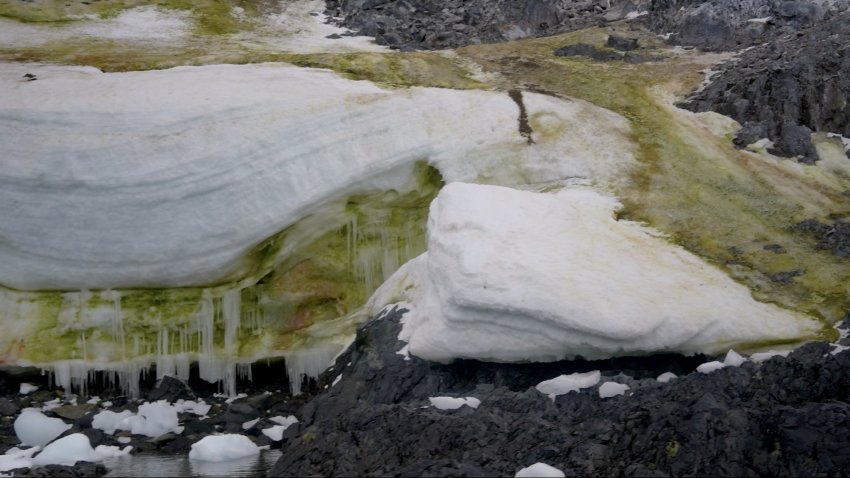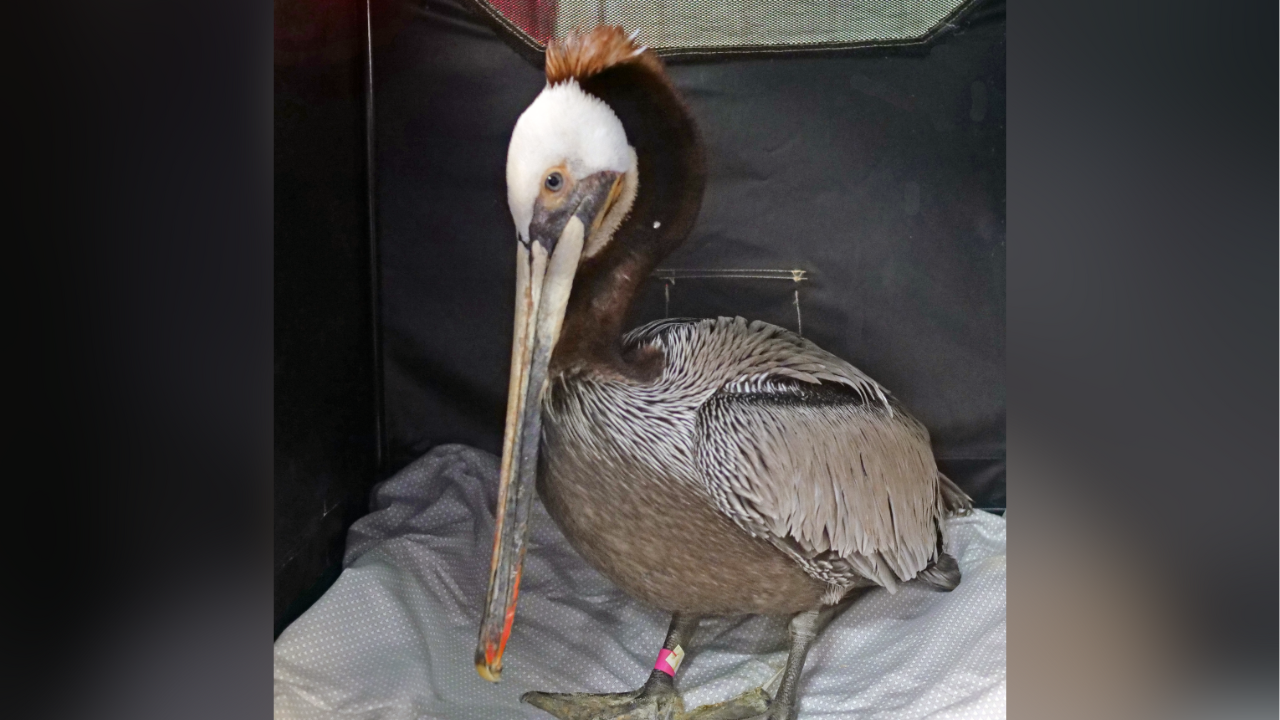Officials are investigating the cause of death of a whale that washed ashore in Ventura as dozens of marine mammals have been found dead from toxic algae. Karma Dickerson reports for the NBC4 News at 4 p.m. on April 24, 2025.
What to Know
- Necropsies on two whales found stranded and dead on the Southern California coast revealed a link to a domoic acid outbreak on the Southern California coast.
- The toxin released by one of the largest algae blooms on record off the coast has sickened or killed thousands of marine animals, including birds, sea lions, common dolphins and more.
- Wildlife experts say the whale deaths are "deeply telling" about the scope and severity of the worsening algae blooms.
- The toxic algae bloom that spread in coastal waters from San Luis Obispo to San Diego has been labeled an extreme danger zone by health and environmental groups.
A toxin released by one of the largest algae blooms on record off the Southern California coast was linked to the deaths of a humpback whale in Huntington Beach and a minke whale in Long Beach.
Stream Los Angeles News for free, 24/7, wherever you are.
The findings released Wednesday by the Pacific Marine Mammal Center follow necropsy results on the two whales, who are among the thousands of marine animals sickened or killed by a domoic acid outbreak on the Southern California coast. Marine mammals, birds, sea lions, common dolphins and more have been affected by the alarming outbreak, which led to the stranding of four whales in Orange and Los Angeles counties.
Get top local stories in Southern California delivered to you every morning with NBC LA's News Headlines newsletter.
The necropsy results emphasize the scope and urgency of the problem along the coast, wildlife experts said.
"Each of these whale deaths is heartbreaking—and also deeply telling," said Keith Matassa, CEO and Founder of the Ocean Animal Response & Research Alliance (OARRA). "Whales are sentinels of ocean health, and their suffering signals a larger ecological imbalance driven by intensifying harmful algal blooms.
"These events are no longer isolated—they’re increasing in scope, scale, frequency, and severity. OARRA is at the forefront of marine mammal mortality response, working alongside partners to investigate, document, and better understand the impacts of these toxic events. We must listen to what the ocean is telling us and act decisively to support long-term monitoring, research, and collaborative response efforts."
Whales are sentinels of ocean health, and their suffering signals a larger ecological imbalance driven by intensifying harmful algal blooms.
--Keith Matassa, CEO and Founder of the Ocean Animal Response & Research Alliance
The female humpback whale was stranded dead on Jan. 24 in Huntington Beach. On April 6, the subadult minke whale was stranded after what the Pacific Marine Mammal Center said was abnormal swimming behavior for days in the Port of Long Beach.
The minke whale drew a crowd to Long Beach's harbor waters in early April near a Catalina Express dock in the Shoreline Marina. Harbor crews used booms in the water in an effort to guide the whale back toward the open ocean, but it was later found stranded.

Test results of the juvenile humpback and subadult minke confirmed high levels of domoic acid, a potent and deadly neurotoxin produced by harmful algal blooms. The necropsies involve examinations of the whales' feces, stomach contents and urine to determine what likely led to their deaths.
"These findings support domoic acid toxicosis as the cause of death," the Center said in a news release. "Like sea lions and dolphins, humpback and minke whales feed on small schooling fish such as sardines and anchovies, which are known to accumulate domoic acid.

"The new results reveal how the domoic acid event is reverberating through the marine food web, affecting more species as it continues. This is the fourth consecutive year with a domoic acid outbreak off Southern California, with this event beginning earlier and remaining more severe than experts have seen before."
Necropsy results are pending for two gray whales stranded on Dockweiler Beach and Huntington beach earlier this year.
This week, a dead humpback whale washed up on a beach in Ventura about one mile north of Ventura Pier. The whale remained on the beach Wednesday, and it was not immediately clear whether algae bloom toxins played a role in its death.

The toxic algae bloom that spread in coastal waters from San Luis Obispo to San Diego has been labeled an extreme danger zone by health and environmental groups. A map from the Southern California Coastal Ocean Observing System shows where the high amount of domoic acid at the center of the toxic algae bloom is spreading along the California coast.
"Seventeen years of surveillance by NOAA’s Northwest Fisheries Science Center/Wildlife Algal-toxins Research and Response Network show that harmful algal blooms and their toxins are becoming more frequent, severe, and long-lasting, especially with warming ocean conditions," said Dr. Kathi Lefebvre, NOAA Research Biologist. "Marine mammal toxin exposures have increased significantly in the past two decades."
There have been more than 50 dead and dying dolphins found along the Southern California coast this week, according to NOAA Fisheries. There were 16 discovered in San Diego on Sunday.
"We typically see mass strandings of California sea lions, with occasional dolphins, during domoic acid events," said Dr. Alissa Deming, Veterinarian and Vice President of Conservation Medicine + Science at PMMC. "This bloom is negatively affecting record numbers of sea lions and dolphins—and now multiple whale species. The scale of this mortality raises serious concerns about ocean health."
Debris from the wildfires and fertilizer runoff are suspected of contributing to the toxic algae spread. It is eaten by small fish, which are then eaten by marine mammals and birds, leading to potentially deadly toxic overdoses.
Sea lions and birds can be saved, but it is almost always fatal for dolphins.



